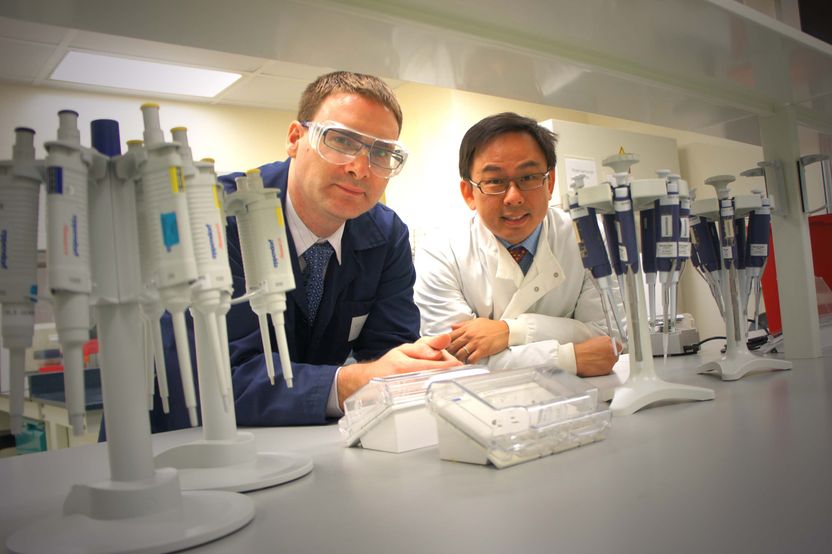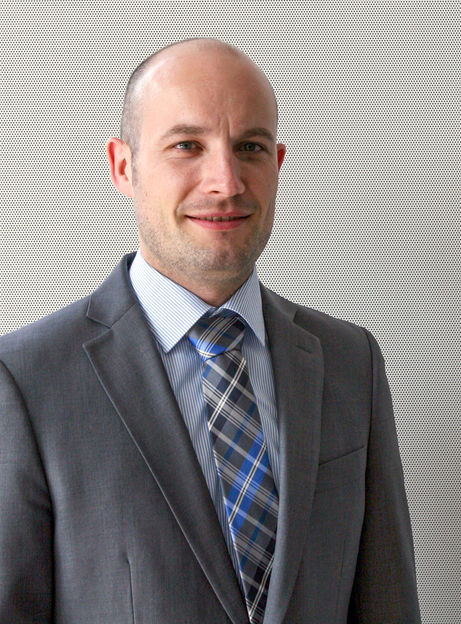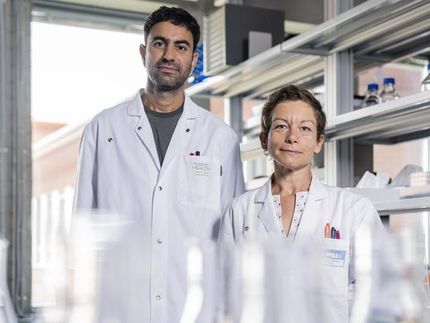Launch of BioLynx provides a boost for the international malaria research community
New NUS spin-off company launches at TechVenture 2011
A new biotech company has been spun off from the National University of Singapore (NUS), to provide research tools, targeting the international malaria research community. BioLynx Technologies Pte Ltd (BioLynx) has been founded by two NUS faculty members: Dr Martin Lear from the NUS Department of Chemistry and Dr Kevin Tan from the NUS Department of Microbiology. The company will focus on further developing and commercialising its LynxTagTM technology platform to other drugs and diseases. BioLynx is launching its presence at TechVenture 2011.

Dr Lear and Dr Tan.
As part of a NUS research project, Dr Martin Lear and Dr Kevin Tan successfully tagged a fluorescent marker to chloroquine, a drug that has been used in the treatment of malaria since 1947. The fluorescent-labelled chloroquine molecule, known as LynxTag–CQTM, demonstrates the same biological activity as normal chloroquine. Due to the fluorescent tagging, researchers can now visualise intracellular drug-cell interactions, in an easy and cost-effective manner. Malaria researchers will find LynxTag–CQTM a useful research tool for studying topics, such as chloroquine resistance, drug uptake, mechanism of drug action, or chemo-sensitization.
“We already validated LynxTag-CQTM as a research tool for malaria research. In addition, we believe it has greater potential and can be used to study mechanisms of other diseases at a cellular level. For example, chloroquine is also used in treating immune diseases, cancer and some viral infections. Moving forward, we plan to go beyond just chloroquine, to have a pipeline of products, synthesizing chemical tags for other high value drugs,” said Dr Kevin Tan, Director (Biology) and co-founder of BioLynx, and an Assistant Professor at the NUS Yong Loo Lin School of Medicine.
Other news from the department business & finance

Get the life science industry in your inbox
By submitting this form you agree that LUMITOS AG will send you the newsletter(s) selected above by email. Your data will not be passed on to third parties. Your data will be stored and processed in accordance with our data protection regulations. LUMITOS may contact you by email for the purpose of advertising or market and opinion surveys. You can revoke your consent at any time without giving reasons to LUMITOS AG, Ernst-Augustin-Str. 2, 12489 Berlin, Germany or by e-mail at revoke@lumitos.com with effect for the future. In addition, each email contains a link to unsubscribe from the corresponding newsletter.
Most read news
More news from our other portals
Last viewed contents
Research on Dendrites Wins 2011 Eppendorf & Science Prize
Revealing the regulating mechanism behind signal transduction in the brain
Gyros and GE Healthcare Life Sciences expand Asian distribution relationship to China, Taiwan and Hong Kong
BRAIN expands its IP Portfolio with bioactive Compound MMPI
Evotec and Bristol-Myers Squibb expand iPSC collaboration

Brain signals for good memory performance revealed

NETZSCH is committed to the Selb site - NETZSCH invests over 60 million euros

Can loss of smell be repaired?

in.vent Clinical Services - Stadt Hennigsdorf, Germany




















































